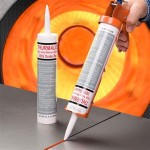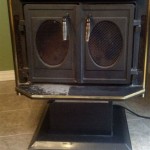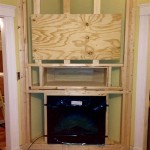Stone Over Brick Fireplace: A Transformation Guide
Fireplaces serve as focal points within homes, offering warmth and aesthetic appeal. While brick fireplaces possess a classic charm, homeowners often seek to update their appearance to align with evolving design preferences. Applying a stone veneer over an existing brick fireplace presents a viable solution for achieving a refreshed and visually impactful result. This article outlines the process, considerations, and advantages associated with covering a brick fireplace with stone.
The decision to overlay a brick fireplace with stone typically stems from a desire to modernize the aesthetic, incorporate natural textures, or coordinate the fireplace with the overall interior design scheme. Brick, while durable and traditional, can sometimes appear dated or clash with contemporary styles. Stone provides a wider range of textural and color options, allowing for greater customization and a more sophisticated look. Furthermore, the installation of stone veneer can enhance the perceived value of the home.
Assessing the Existing Brick Fireplace
Before commencing the stone veneer application, a thorough assessment of the existing brick fireplace is crucial. This involves evaluating the structural integrity, cleanliness, and overall condition of the brick surface. Cracks, loose bricks, or crumbling mortar joints must be addressed prior to any overlayment. Ignoring these issues can compromise the adhesion of the stone veneer and lead to future problems. A professional inspection may be warranted, particularly if significant damage is apparent.
Cleaning the brick surface is an essential step. Years of soot, dust, and grime can accumulate, hindering the bond between the brick and the mortar used to adhere the stone. A wire brush and a mixture of water and a mild detergent are typically sufficient for cleaning. For stubborn stains, a specialized brick cleaner may be required. After cleaning, the surface should be thoroughly rinsed and allowed to dry completely before proceeding.
Preparation of the brick surface also involves addressing any unevenness. Minor imperfections can often be compensated for during the mortar application process. However, significant protrusions or depressions may necessitate the use of a patching compound or the removal of protruding bricks. An even and stable surface is paramount for a successful and aesthetically pleasing stone veneer installation.
Selecting the Appropriate Stone Veneer
The selection of the appropriate stone veneer is a critical decision that influences both the appearance and the long-term performance of the fireplace update. Stone veneer is available in a wide array of materials, colors, textures, and shapes, each offering a distinct aesthetic. Common options include natural stone veneer, manufactured (or faux) stone veneer, and thin brick veneer (though technically brick, it’s often used in similar applications). Natural stone veneer consists of actual stone that has been cut into thin pieces for easier installation. Manufactured stone veneer is a concrete-based product designed to replicate the appearance of natural stone. Each type has distinct advantages and disadvantages.
Natural stone veneer offers the authentic look and feel of real stone, with variations in color and texture that enhance its unique character. However, natural stone veneer is generally more expensive and heavier than manufactured stone, potentially requiring additional structural support, especially for larger installations. Manufactured stone veneer is typically lighter, more affordable, and more consistent in color and texture. It is also easier to cut and install. The durability and appearance of manufactured stone have improved significantly in recent years, making it a popular choice for many homeowners.
Beyond the material composition, the size, shape, and color of the stone veneer should be carefully considered in relation to the overall design of the room and the desired aesthetic. Larger stones create a more rustic and dramatic look, while smaller, more uniform stones offer a more modern and refined appearance. The color of the stone should complement the existing color palette of the room and the surrounding décor. Samples of different stone veneers should be obtained and viewed in the actual lighting conditions of the room to ensure a satisfactory match.
The Installation Process: Mortar and Adhesion
The installation of stone veneer over brick involves a meticulous process that requires careful attention to detail. The foundation of a successful installation lies in the proper preparation of the mortar and the subsequent adhesion of the stone to the brick surface. The mortar serves as the bonding agent, holding the stone veneer securely in place and providing a weather-resistant barrier.
A specialized mortar designed for stone veneer applications should be used. This type of mortar typically contains polymers and additives that enhance its bonding strength and flexibility. The manufacturer's instructions should be carefully followed when mixing the mortar, ensuring the correct water-to-mortar ratio. A consistent and workable mortar consistency is essential for proper adhesion. The mortar should be thoroughly mixed until it reaches a smooth, peanut-butter-like consistency.
Prior to applying the mortar, a scratch coat may be applied to the brick surface. This involves applying a thin layer of mortar to the brick and then scratching it with a notched trowel to create a textured surface that enhances the mechanical bond between the brick and the subsequent mortar layers. The scratch coat should be allowed to cure for at least 24 hours before proceeding with the stone veneer installation.
The mortar is applied to the back of each stone veneer piece using a trowel. The amount of mortar applied should be sufficient to create a strong bond with the brick surface, but not so excessive that it oozes out from the joints between the stones. The stone is then pressed firmly against the brick surface, ensuring even contact and proper alignment. A level can be used to ensure that the stones are installed in a straight and plumb line. Spacers can be used to maintain consistent joint widths between the stones.
The installation process typically begins at the bottom of the fireplace and progresses upwards, allowing gravity to assist in holding the stones in place. As each row of stones is installed, the excess mortar is carefully removed from the joints using a tuckpointing tool or a similar instrument. The joints can be left unfilled for a more rustic appearance or filled with mortar for a more refined look. The choice depends on the desired aesthetic and the type of stone veneer used.
Allow the mortar to cure completely, following the manufacturer's recommendations, before applying any sealants or performing any other finishing work. The curing process typically takes several days. During this time, the fireplace should be protected from moisture and extreme temperatures.
A final sealant may be applied to the stone veneer to protect it from staining and water damage. The type of sealant used should be compatible with the type of stone veneer and the mortar used in the installation. A professional installer can advise on the best sealant options. The sealant should be applied according to the manufacturer's instructions.
Proper ventilation during the application and curing processes is essential. This helps to prevent the buildup of harmful fumes and promotes faster drying of the mortar and sealant. Opening windows and doors or using fans can improve ventilation.
Adhering to local building codes and regulations is paramount. Some jurisdictions may require permits for fireplace renovations, and building codes may specify certain requirements for the materials used and the installation methods employed. Consulting with a building inspector or a qualified contractor can help ensure compliance with all applicable regulations.
By carefully assessing the existing fireplace, selecting the appropriate stone veneer, and meticulously following the installation process, homeowners can transform their brick fireplaces into stunning focal points that enhance the aesthetic appeal and value of their homes. The resulting stone-over-brick fireplace can provide years of enjoyment and visual satisfaction.

Pin By Tarra Wills Efkarpidis On For The Home Brick Fireplace Remodel Stone

Installing Stone Veneer Over A Brick Fireplace Grand River

Stone Veneer Over A Brick Fireplace Updates The Look

Faux Stone Fireplace Surround Over Old Brick Genstone

Stone Veneer Over A Brick Fireplace Updates The Look

Read This Before Your Stone Fireplace Makeover Understanding Undertones

Brick Fireplace Makeover Pine And Prospect Home

Diy Stacked Stone Fireplaces On A Budget Msi Blog

Stone Veneer Over A Brick Fireplace Updates The Look

Transform Your Home Stone Veneer Over Brick Fireplace Guide








